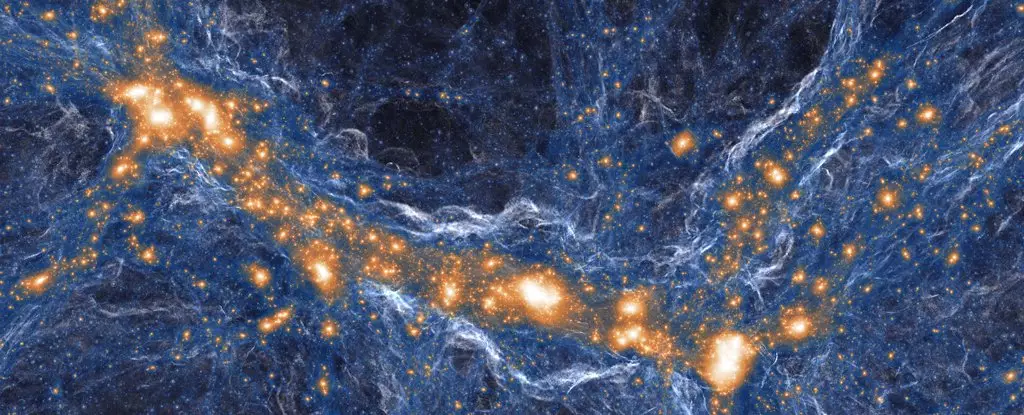Dark matter remains one of the most perplexing elements in the field of astrophysics, intriguingly named not for its color or physical attributes, but rather due to its elusive nature. Unlike ordinary matter, which interacts with electromagnetic radiation and thus becomes visible, dark matter cannot be seen with conventional observational tools such as telescopes. This enigmatic material does not emit, absorb, or reflect light, making it “dark” in the literal sense. However, it exerts a profound influence on the cosmos, shaping the universe’s structure through its gravitational pull.
Regular matter can indeed create shadows, such as the dark patches formed by molecular clouds in the Milky Way. This is due to its ability to interact with light, a characteristic stemming from the charged particles (electrons and protons) within atoms. Dark matter, conversely, lacks this electromagnetic interaction; it simply coexists with light without affecting or being affected by it. This absence of interaction means that when light encounters dark matter, it passes through unscathed, allowing astronomers to theorize and deduce the presence of dark matter through indirect observations—primarily its gravitational effects.
Gravitational Influence on Galactic Structures
The gravitational effects of dark matter have led to some fascinating insights about the universe. For example, it is theorized that the presence of dark matter is responsible for the clustering of galaxies into superclusters. This clustering results from its gravitational influence, which can cause light to bend as it travels through or around massive concentrations of dark matter. This phenomenon, known as gravitational lensing, provides astronomers with a method to map the distribution of dark matter in the universe.
Despite these indirect observations, there has long been a question lingering in the scientific community: do dark and regular matter interact beyond their gravitational relationship? This is a significant inquiry because the answer could either reinforce or challenge prevailing models of cosmic structure.
Recent research focusing on ultrafaint dwarf galaxies (UFDs)—satellite galaxies characterized by a star count far less than expected based on their mass—has provided fresh perspectives on this pivotal question. UFDs, which seem to be predominantly composed of dark matter, present an exciting opportunity to investigate the dynamics of both dark and regular matter.
Researchers utilized computer simulations to explore how star distribution should behave under two distinct scenarios: one in which dark and regular matter simply interact through gravity and another in which they engage directly. The simulations predicted a tighter star concentration in the center of UFDs for the non-interacting scenario, while a more uniform distribution was expected if the two types of matter interacted.
Upon comparing these simulation outcomes with observational data gathered from six specific UFDs, the results were surprising. The evidence leaned towards the interacting model being a better representation of reality, hinting at a more complex relationship between dark and regular matter than previously recognized. This was a momentous discovery, suggesting that some degree of direct interaction exists, which may lead to a re-evaluation of existing dark matter theories.
The revelation that dark and regular matter might interact beyond gravitational forces carries significant implications for the field of cosmology. It indicates that traditional models of dark matter dynamics are perhaps not wholly accurate, and this could pave the way for novel approaches in direct detection methods for dark matter.
The exploration of dark matter remains far from resolved, and as researchers continue to scrutinize these interactions, we may uncover deeper insights into the fundamental nature of our universe. The interplay between dark and regular matter could illuminate the origins of cosmic structures and lead us ever closer to unraveling the mysteries of this shadowy substance that permeates the cosmos.
Ultimately, the ongoing investigations into dark matter not only aim to clarify its elusive characteristics but may also redirect our understanding of fundamental physics, challenging our default perceptions and leading to a more comprehensive understanding of the universe we inhabit.


Leave a Reply